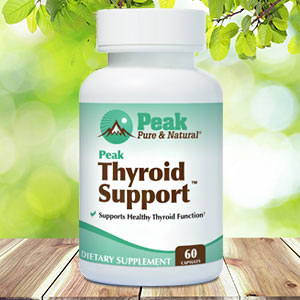Get Easy Health Digest™ in your inbox and don’t miss a thing when you subscribe today. Plus, get the free bonus report, Mother Nature’s Tips, Tricks and Remedies for Cholesterol, Blood Pressure & Blood Sugar as my way of saying welcome to the community!
The ‘K’ey nutrient for strong bones when you need them most

As my mother gets older, she’s become much more careful about avoiding a fall for fear of hip fracture. She avoids icy paths, sidewalks and parking lots and takes care to watch her footing in any other circumstance that could result in a broken arm, wrist or, worst of all, a broken hip.
There’s good reason for her to be cautious.
At least one study shows that broken bones among older people can increase their risk of death for up to 10 years after the break. And numerous studies have linked hip fracture with higher mortality risk in the elderly.
It’s got me thinking about my bone health as well, and asking questions about what I can do now to ensure stronger bones as I age — ones that hopefully won’t fracture as easily if I were to take an unexpected fall. Because let’s face it, there are only so many things we can control in this life.
Fortunately, one of those things is nutrition, including a crucial nutrient that could cut the risk of fracture drastically…
The vitamin that can reduce fracture risk
When researchers at Edith Cowan University looked at the relationship between fracture-related hospitalizations and vitamin K1 intake in Australian women over a 14.5-year period, what they discovered was heartening.
Women who consumed more than 100 micrograms (mcg) of vitamin K1 daily were 31 percent less likely to have any fracture compared with participants who consumed less than 60 mcg per day — the current guideline for vitamin K intake in Australia. And those who ate the most vitamin K1 cut their risk of hospitalization due to hip fracture by 49 percent.
Study lead Dr. Marc Sim says the results are independent of many established factors for fracture rates, including body mass index, calcium intake, vitamin D status and existing bone-depleting disease.
“Basic studies of vitamin K1 have identified a critical role in the carboxylation of the vitamin K1-dependant bone proteins such as osteocalcin, which is believed to improve bone toughness,” he says. “Vitamin K1 may also promote bone health by inhibiting various bone resorbing agents.”
A previous ECU trial showed dietary intake of less than 100 mcg of vitamin K1 could be too low for this carboxylation to occur, Sim adds.
Getting enough vitamin K1
Given the results of this study, you’ll probably want to add plenty of vitamin K1 to your diet regardless of your age. The more vitamin K1 you consume now, the less your risk of life-altering fracture later in life.
To get 100 mcg of vitamin K1, you would need to eat about 125 grams of dark leafy greens per day. This is relatively easy, since it’s the equivalent of one to two servings.
“It’s another reason to follow public health guidelines, which advocate higher vegetable intake including one to two serves of green leafy vegetables — which is in line with our study’s recommendations,” Sim says.
Foods rich in vitamin K1 include vegetables like spinach, kale, Brussels sprouts, broccoli and green beans and fruits like prunes, kiwi and avocado.
Rounding out vitamin K for strong bones
If you know anything about vitamin K, you know that there are two forms: K1 and K2. And you may be wondering where vitamin K2 fits into the mix.
Unlike vitamin K1, which is produced by plants, vitamin K2 comes mainly from animal products like egg yolks, cheeses, butter, pork and chicken. There are some subtypes of K2 found in fermented foods, especially natto, a Japanese dish made from fermented soybeans.
Like vitamin K1, vitamin K2 is great for protecting bone health. Specifically, vitamin K2 directs calcium to places it’s needed, like bones, and away from places it’s not, like your arteries. That’s why vitamin K2 is also excellent for keeping your heart and blood vessels healthy and flexible.
In summary, it’s a good idea to include foods sources that help round out your vitamin K intake, getting plenty of both K1 and K2. If you’re a woman, you’ll want to get at least 90 mcg of vitamin K2 every day. If you’re a man, 120 mcg of vitamin K2 is your daily target.
Editor’s note: Did you know that when you take your body from acid to alkaline you can boost your energy, lose weight, soothe digestion, avoid illness and achieve wellness? Click here to discover The Alkaline Secret to Ultimate Vitality and revive your life today!
Sources:
Catch a break: higher vitamin K intake linked to lower bone fracture risk late in life — Edith Cowan University
Dietary Vitamin K1 intake is associated with lower long-term fracture-related hospitalization risk: the Perth longitudinal study of ageing women — Food & Function
Broken bones among older people increase risk of death for up to 10 years — Endocrine Society














